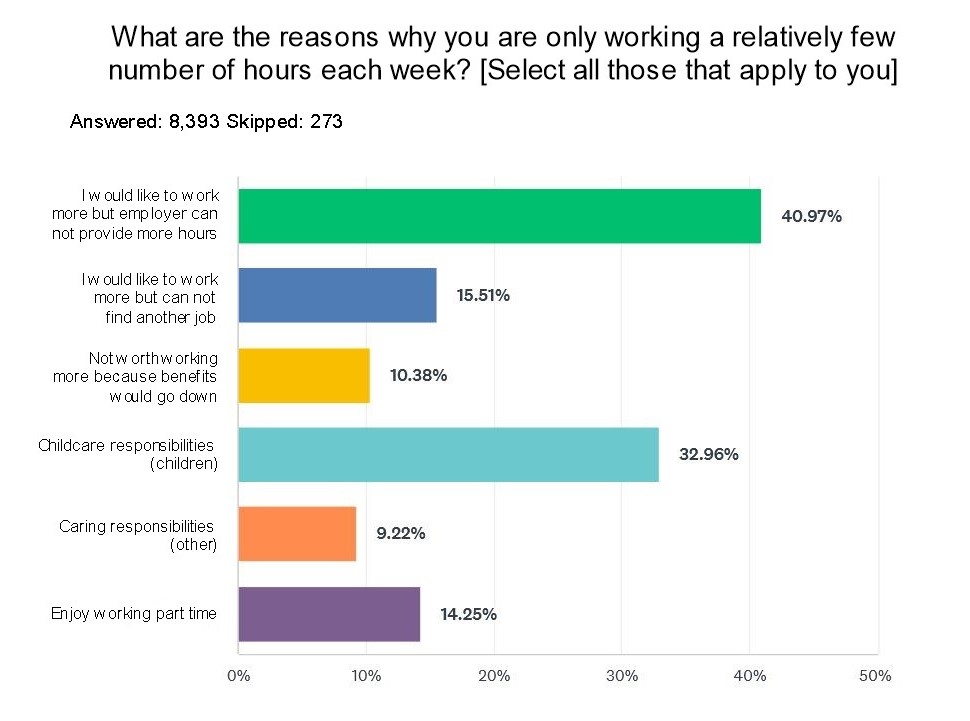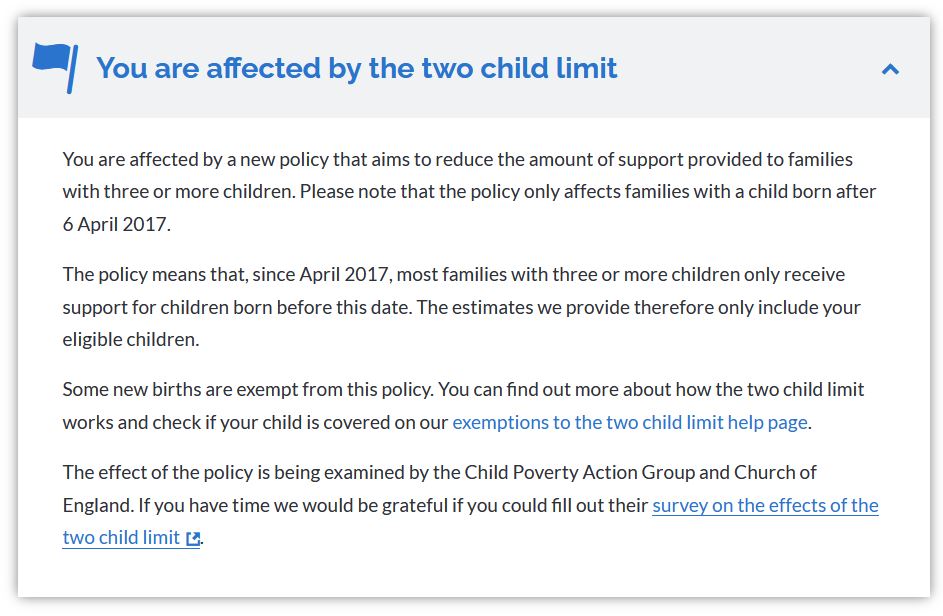Using entitledto for social policy research
October 25, 2023 –
In June we published a blog to let the world know about a new project we were trailing, entitledtolearn. You can read more about that project in this linked blog but, during its review, we realised one of the aspects that went really well was the focus groups we held with our users to find out their views in relation to education and training.
To recruit people for our focus groups we used a new ‘surveys’ functionality in our benefits calculator. This blog outlines the way this new service works, as well as describing a few other ways we have helped researchers over the last few years.
If you’re involved in research or want to speak to low-income households then read on – we might be able to help you too!
Example 1:
Surveying specific groups about the effect of benefits reforms

Before Universal Credit the benefits system encouraged people to work 16, 24 or 30 hours depending on their circumstances. Between 2012 and 2020 we carried out some research into the reasons why people worked a small number of hours and, by implication, whether this was influenced by rules in the benefits system.
We created a questionnaire on SurveyMonkey and recruited people to it by linking from a help page on our website that was presented to people working 1-15 hours a week. The link resulted in over 8,000 responses to our survey.
The point of the survey was to see the extent to which labour market behaviour was influenced by rules in the benefits system. It found that employers’ unwillingness to provide extra hours and childcare rules were by far the biggest reasons why respondents were not working more hours (the image above shows the results of this question).
The effect of benefit withdrawal rates, or changes at 16 hours (as occurred under tax credits), was mentioned as a factor by only 1 in 10 people who responded. It's not a fully scientific survey, but it does help show a picture of what influences people’s decisions in practice.
Example 2:
Recruitment of specific groups for qualitative research

In 2019 we were approached by the Church of England and the Child Poverty Action Group (CPAG) because they wanted to talk to people who were affected by the two-child limit. We were able to help them with their research because we naturally identify affected households when they use the calculator to be able to calculate their benefits entitlements [1].
To recruit people for the project we put a link on the message that we display in the benefits calculator to users affected by the two-child limit, inviting them to fill in a survey about how it had affected them (see image above).
The responses from individuals about their experience have been used to provide qualitative background to the effect of the limit. The latest report ‘Six years in: the two-child limit’ can be found on the CPAG website. The researchers also recruited some of the people who responded to the survey to take part in focus groups.
Example 3:
Access to anonymous data for all groups
(with optional recruitment for focus groups)

The lesson from our work with CPAG and others was that the calculator worked well in helping researchers get feedback from people affected by the benefit reforms already highlighted by the benefits calculator. We realised though that we needed a new way to help researchers hear from low-income households about other issues. As a result, we set about creating the surveys page.
The main difference that our new surveys functionality makes is that it creates a way to ask about topics of interest that we don’t already cover in order to calculate someone’s benefit entitlements.
For example, the images above show a survey we ran as part of our entitledtolearn project, where we needed to recruit people to take part in focus groups into financing education and training. We have also used this page to help recruit user groups for the Learning and Work Institute and for the Work Foundation, an academic research body based at the University of Lancaster.
At the moment, this functionality allows for three bespoke yes/no questions to be asked to everyone carrying out a benefits calculation. The anonymous responses to these questions can then be accessed in their own right, or, if more questions are needed, we can collect email addresses for people willing to be contacted about the research and/or to take part in focus groups which we forward on to a research team.
Can we help you to reach low-income households for your research?
We believe social policy research is vitally important in shaping public services and providing evidence for decision makers. If you have a project or piece of research where you need to hear from people on a low income, then we might be able help.
Our service is straight-forward. All you need to do is think about the questions you want to ask and, if recruiting for a focus group, how much you want to offer people to take part.
We agree beforehand which of the examples above would work best for your research, as well as the copy to be used on our website, and we can be up and running within a short timeframe.
For the sake of transparency, we may need to charge a small admin fee for these services but we will ensure we find the easiest solution for your needs.
Get in touch if you think we might be able to help you.
Footnotes:
[1] The way that the two-child limit was introduced meant that at the outset only a relatively small number of claimants were affected. The rules were (and are) that most families with a third child do not get any additional payment if the additional child was born after 6 April 2017. The reform is still rolling out, currently affecting over 750,000 households (or one in ten children) but when the reform started relatively few families were affected (see Figure 12 at Gov.uk official statistics).

